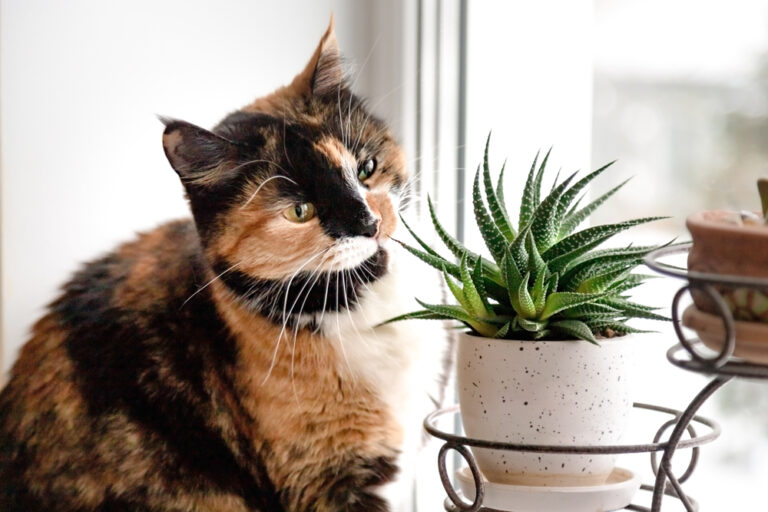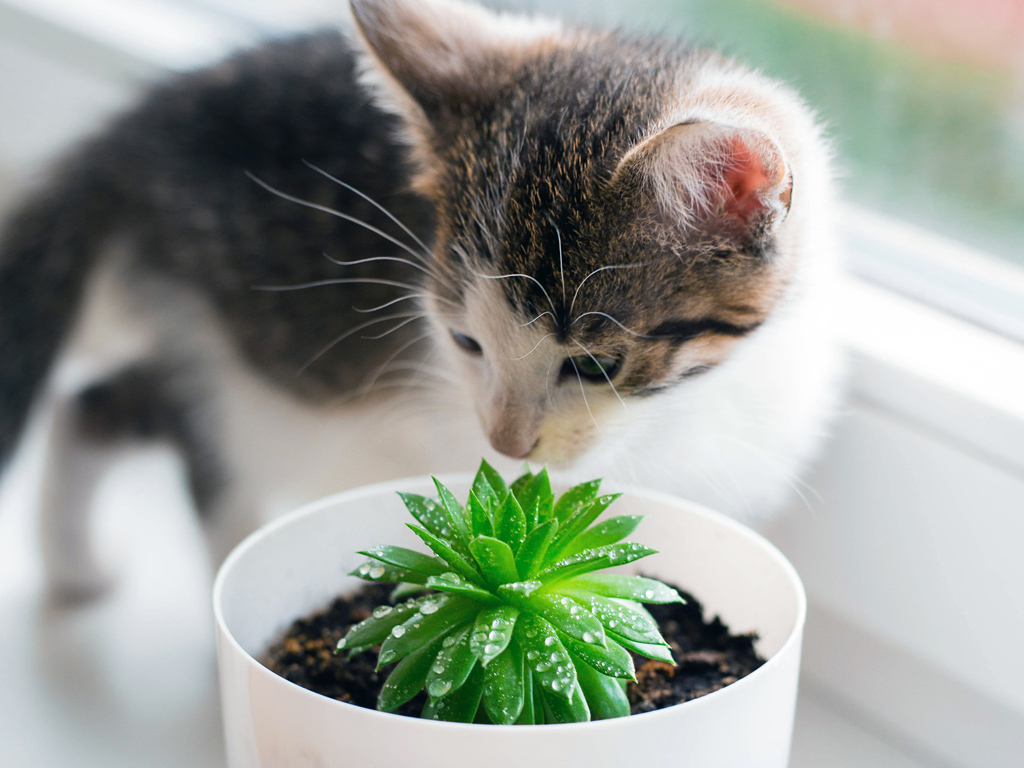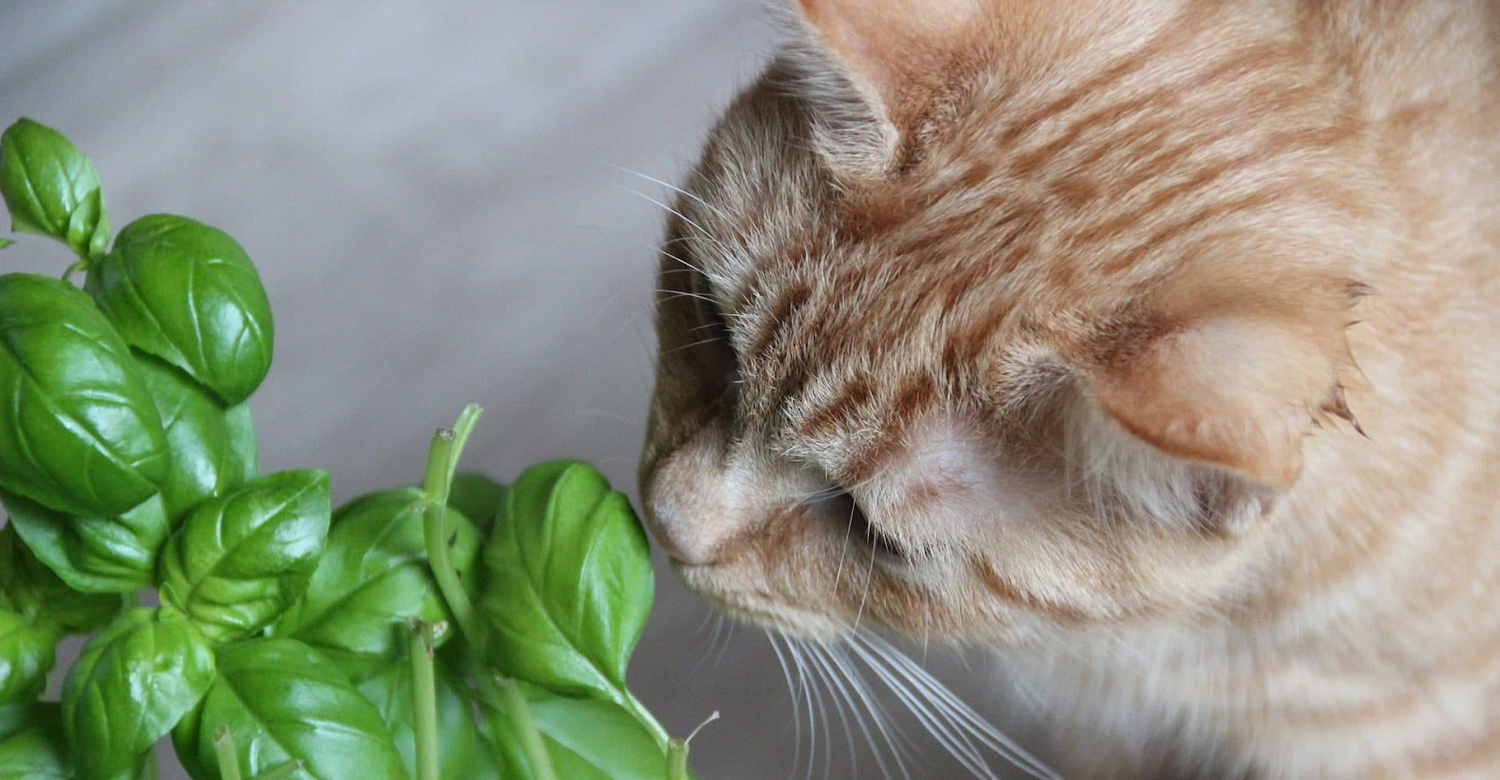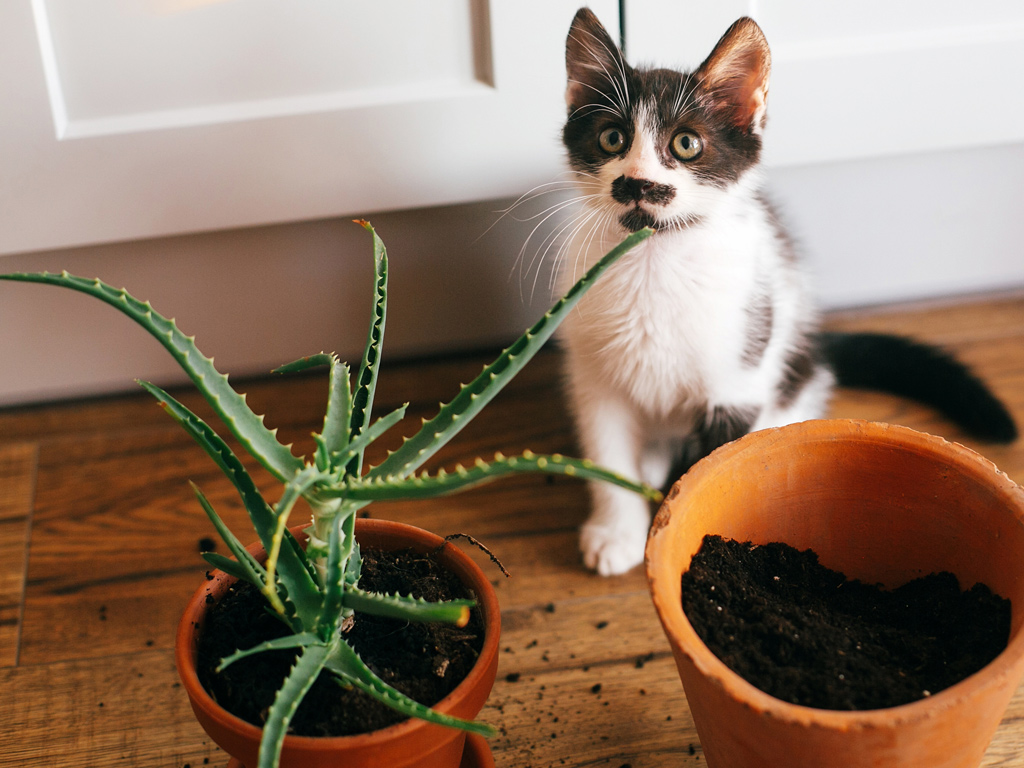Most of us share our homes with at least one cat or dog, and many of us have both. They can be curious observers and they like to explore the world both by mouth and by paw. So plant toxicity is a serious thing as we buy a houseplant. Some of us have pets at home who pay our plants no interest whatsoever. But for all pet owners out there who let their furry friends eat absolutely anything, we consulted the pros to learn How to Keep Your Pets Away from Your Indoor Plants


What Is Plant Toxicity?
When someone says that a plant is toxic, that is shorthand for the plant having some poisonous substance to animals if ingested. Many toxins will have different effects on the body, even depending on the toxin itself. For example, some plants affect the kidneys, and others may affect the heart, or cause muscle tremors or even vomiting. Many plants are non-toxic to your pet but simply upset their stomach if ingested. For example, if your dog eats grass and later vomits, this does not mean the grass is toxic. So keep pets away from your house Plants.

How Does A Toxic Plant Affect A Pet?
Toxic plant ingestions are not common, but they are not unusual. Toxic plants can affect your pet's body in many ways. The most common one is an upset stomach which includes vomiting, nausea, and diarrhea. Some have oral irritants that can cause burns or irritation in the mouth and throat. Some can cause irregular heart rate, tremors, episodes, or kidney or liver failure. In the case of highly toxic plants, it may surely be lethal if ingested. That would depend on the toxicity of each plant. At times, toxicity depends on the part of the plant that was ingested. Certain parts of the plant could be significantly more toxic than other parts, such as the bulb in the example.

Is Plant Toxicity Different For Cats And Dogs?
Yes, there is a lot of difference between dog and cat toxicity. One of the main differences is that cats are more vulnerable than dogs to kidney failure and death after ingesting any part of a toxic plant. If a plant is toxic to one species both should avoid it.

How To Treat A Pet Who Ingested A Poisonous Plant?
It is always dangerous to assume the toxicity of a plant to be mild, especially before consulting your vet or a pet poison helpline and before you are certain that the plant is safe for pets. Certain plants contain elements that are highly toxic and they may take time before they show noticeable symptoms, it could be hours. However, if you know what your pet has ingested and there is a relatively low danger of high toxicity, your fur kid might simply be suffering from stomach discomfort for the day. In this case, keep plenty of water around, and give a bland diet that’s easy on the stomach (plain chicken and rice can work for dogs, or ask your vet for some sensitive stomach canned food).
A lot of houseplants and garden plants are toxic to animals, and they cause health damage if ingested. In particular, lilies are poisonous to cats as they might cause an almost immediate failure of the kidneys. Aloe vera, although beneficial for human skin, has been documented to cause vomiting and lethargy in dogs and cats. Sago palms are commonly used in landscaping and are very toxic as all parts of this plant, more so its seeds may cause liver damage and death. Some common examples of indoor plants include philodendrons and pothos, but these can irritate the mouths and throats of pets. So pet owners should get to know their plants before allowing them in their homes or yards to keep their pets safe.


